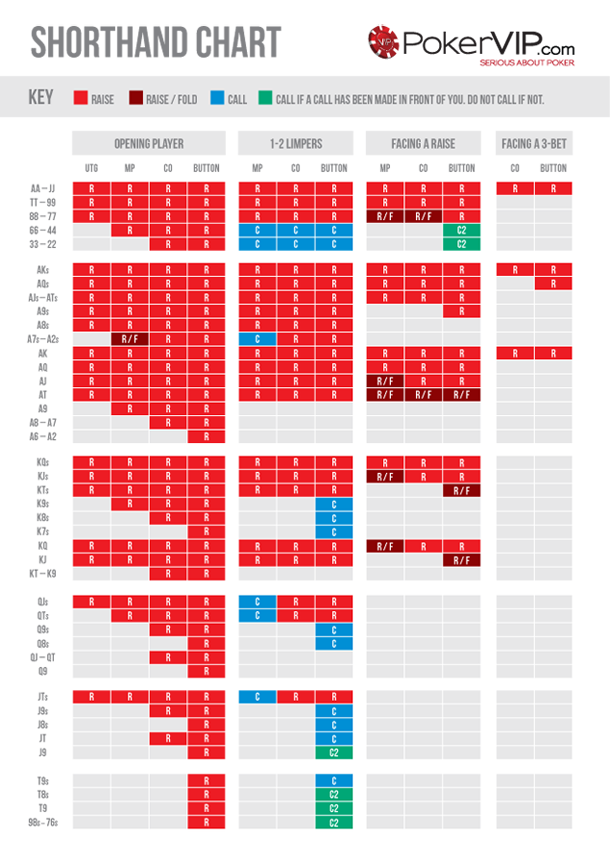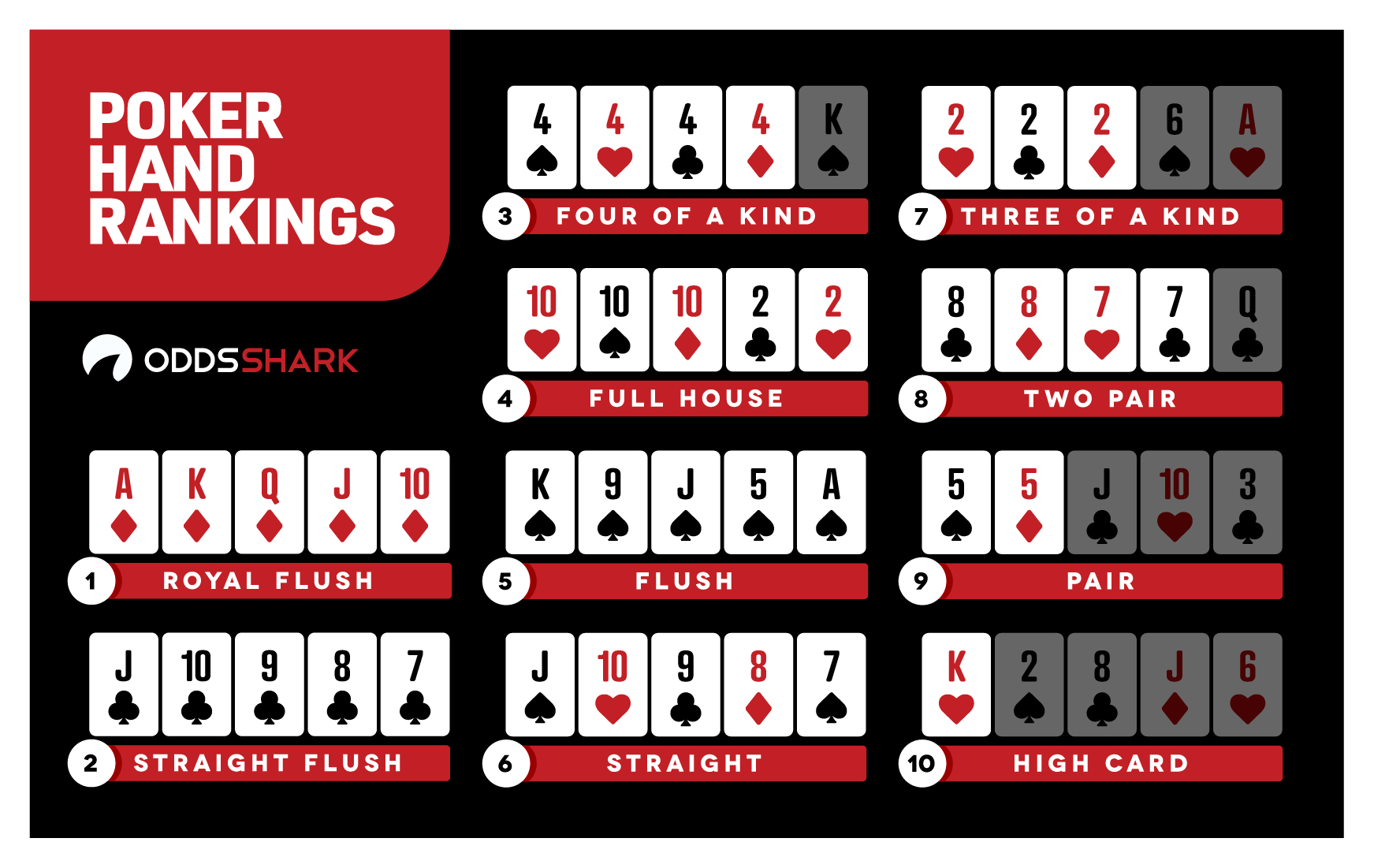The Best Starting Hands In Poker You can be Dealt. In the world of poker, players acknowledge that some starting hands in poker are just better than others. This has a lot to do with what can be built off of the cards, and there’s always some disagreement on these matters between pros.

- Learn to Play Poker in no time: poker tutorial is a great way to learn the card g.
- All Texas Hold’em starting hands can be separated into two categories: “suited” and “offsuit”. Suited hands contain two cards of the same suit, like J♣9♣, A ♥ K ♥, K♠Q♠ and 9 ♦ 3 ♦. All other starting hands are in the offsuit category, like A♠8 ♦, 7♣5 ♥ and K ♥ 9 ♦.
- Poker Starting Hands Best Starting Hands in Poker and Chart Poker starting hands: playing the right cards at the right time The basic idea of poker is to play the strongest hands in early position, good hands in mid-position and a few more hands in the late (aka strongest) position. Over time, you'll naturally want to shake things up a bit.
- The 10 Best Starting Hands in Texas Hold 'em Poker. Nick Koudis / Photodisc / Getty Images. A pair of aces, also known as 'pocket rockets' (and sometimes 'American Airlines') is the best. Ace-King (Suited) Ace-Queen (Suited).
Omaha Hi-Lo is a fascinating game packed with action! The action, at least in small-middle stakes games, is not only loose but many times also weak. By having four cards, and playing for high and low, some players frequently find a “reason” to stick with their hand. However, even if their hand has some potential, pot odds often do not justify playing it. So, many novice players play too loosely, stick with their hands when they shouldn’t, and end up making many mistakes.
Most errors originate from poor preflop hand selection. Understanding which Omaha high-low starting hands are solid and under which circumstances they are playable will significantly improve your game!
Starting hands
The best starting hands in Omaha hi-lo have both strong high and low potential. Since aces are the best cards for high and low, they are excellent starting hands! Almost all playable starting hands contain at least an ace! On the counterpart, cards between six and nine, are considered weak. So, any starting hand containing one or more of these cards usually decreases in value.
Another deal-breaker is to have trips in your starting hand! This is because you can only use two out of three, so you have an unusable card in your hands. Your chances of hitting a set also decrease. Let’s take a look at the strongest starting hands.
Top hands
The best starting hand is AA23, followed by AA24. These hands have excellent high and low potential! If one, or even better, both aces are suited, the strength of the hand increases as it also has nut flush potential.
Powerful starting hands with both high and low potential
- AA, with one or two low cards (the smaller, the better), like AA2x or AA35
- A2 or A3 with two high cards, like AKJ2 or AKQ3
- A2 or A3, with a big pair, like KK or QQ
Strong only low starting hands
- A2 or A3 with one or two more low cards (the lower, the better), like A23x
- 2345, 2346, 2356 (the flop must contain an ace, and at least another small card, or the hand may become useless)


Note that if one or no low cards come on the flop, these hands lose their value
Strong only high starting hands
- AA, with two high cards, like AAKJ
- A with three cards ten or higher, like AKJ10 or AKQJ
- Four high connected cards, like KQJ10 or QJ109
- High cards with one pair, like KKQJ, or KQQJ
- Double paired high cards, like KKQQ
/top-5-worst-starting-hands-for-texas-hold-em-poker-412257_V2-12bb71e44fe54679a5052d320bf8ea58.png)
Texas Hold Em Starting Hands
Note that if three or even two low cards appear on the flop, these hands go down in value. So you should adjust your play accordingly.
Trouble starting hands to avoid
Unlike Holdem, in Omaha hi-lo, it is ok to play a little looser preflop. The idea is to try to see many flops with hands that have potential. However, you must remain selective and avoid some trouble hands, especially when playing in a full table.
Some hands may seem attractive, but will only make second or third best! Don’t play them as they have a negative expected value. For example, avoid playing A4x or A5x type of hands in a full table, as they may get you in trouble more often than not.
The same goes for the high. With everyone having four cards, it is more probable that someone will make a monster hand, so you don’t want to be drawing for second or third best! For example, if you are drawing for a queen-high flush, you will often lose to an ace or king-high flush. Even if you make a set of nines, you will often end up second best to a higher set! Let’ take a look at some other trap hands.
- 333A, AAA4 type hands have minimal high potential, and even if they make a low, it may be second-best.
- 9876, 8765, 7654 may seem keen but are really not! With these hands, it is tough to scoop the pot. If you make a nut straight, most of the time, there will be a low, and you will split the pot. If you make a straight with high cards, a better straight may beat you!
- High pairs with two one or two trash cards like KK9x or QQxx are weak hands. Do not confuse with the value of a pocket pair in Holdem. In Omaha hi-lo, with straight and flushes appearing often, a single pair is not all that great.
So, how to bet preflop?
In Omaha hi-lo, taking the lead in the hand with preflop aggression is less crucial than in Holdem. So, raise preflop mostly for value when you have powerful hands and position.
From position, when several players have limped, you can widen your range and add in see cheap flops with some speculative hands. Raise with premium hands for value. Most of the limpers will call you, and you also want to build the pot to be able to make big bets after the flop.
Out of position, limp with hands that have both high and low potential, to see a multiway flop.
Multiplayer versus heads-up preflop requirements
Best Starting Hands In Poker Ranked
Some of the hands that are not good enough for a multiway pot go up in value heads-up. When playing in a multiway pot, you want your hand to have nut, or close to nut potential for the high and low. When playing heads up, you can win the low or high with medium-strength hands. For example, heads-up A4 is often good enough for the low, whereas in a multiway pot, it is a weak hand.
Also, heads-up you can win the high with a hand like two pair or a set, even when the board has some flush or straight possibilities. If the board is dry, even top pair-top kicker can win you the pot! In a multiplayer pot, when the board has flush or straight potential, you should expect that someone will have it most of the time!
In a nutshell
In Omaha hi-lo, you often see players playing too loosely. By adopting a selective starting hand strategy, you gain a significant advantage over your opponents. In multiplayer pots, play hands that have strong high and low potential, and avoid hands that can give you second or third best!
I hope you found this post helpful. If you have any questions or suggestions that you want to share, please leave a comment below.